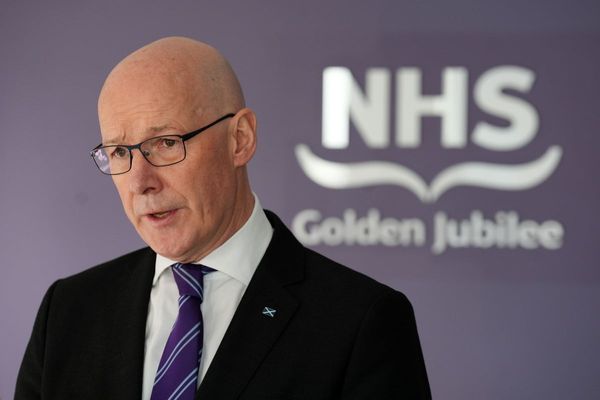
Since the global economic crisis that originated in the United States 14 years ago, the world economy has faced regular bouts of volatility. Massive capital injections helped the US economy recover from the initial shock in 2008, but also pushed other economies with structural problems, including some in Europe, into sovereign debt crises.
Meanwhile, China unleashed massive stimulus of its own to fight the impact of the US-inflicted crisis, only to face its own problems including the rise of shadow banking and a stock market bubble that eventually burst, causing a hard landing in 2016.
Nevertheless, the global economy recovered somewhat in 2017-18, with global synchronised growth from strong demand for manufactured goods, before it started to wobble again. A series of US interest-rate increases in 2018-19, combined with ex-president Trump's trade war with China, sapped investor sentiment and ultimately led to an inverted yield curve in the bond market in 2019. That's usually a predictor of recession and indeed, a recession arrived in 2020, exacerbated by the onset of Covid-19.
To deal with the impact of the pandemic, authorities once more resorted to large-scale fiscal stimulus, which has led to massive demand-driven inflation. Coupled with supply chain disruption, the world economy has started to experience stagflation.
The final straw this time is the Russo-Ukrainian war, which is leading to an energy crisis, a food crisis and a commodity crisis in general. Worse, the Zero-Covid policy in China threatens to derail the world's second-largest economy with severe knock-on effects on global supply chains.
In our view, it's highly probable that these factors will eventually lead to a global economic crisis next year, or at the end of this year at the earliest.
As we noted in our last article, the coming crisis originated mainly in the US. Inflation in the world's largest economy is the highest in 40 years and is originating from both the cost-push factor of supply disruptions, exacerbated by the Ukraine crisis and Chinese lockdowns, and from demand-pull factors fed by the largest monetary and fiscal stimulus the government has ever injected.
To counter the rise in inflation, the Federal Reserve will have to raise interest rates anywhere between seven and 10 times this year, pushing the policy interest rate to between 1.75% and 2.50% at the end of this year and possibly to 3% next year.
In addition, the Fed has to withdraw liquidity, selling down its bond holdings at a rate of about $100 billion per month, a process known as quantitative tightening. By doing so, it hopes that long-term bond yields will become higher than short-term yields and reverse the inverted yield curve that occurred at the beginning of this month.
Nevertheless, the rise in both long-term and short-term interest rates will eventually increase the financial cost of the US economy and be an important factor behind a recession.
Rising bond yields will push up the interest on home loans. The 30-year mortgage rate is now 5%, versus 2.8% a year ago. There'll also be an impact on auto loans and private-sector fundraising in general. This will increase financial burdens and decrease the net income of the people businesses, eventually leading to a crisis.
NO STOPPING THE FED
The question is, if the Fed realises that raising rates too high or too quickly will lead to a crisis, will it continue to do so? We believe that since the demand-pull component of inflation is not yet over, as seen in rising rents and wages among other indicators, the Fed still needs to raise rates.
A study by former New York Fed president Bill Dudley found that almost every time the Fed raises policy interest rates, the economy almost always goes into recession. The exceptional cases were when the unemployment rate was still high but momentum had declined, implying improving labour market conditions. But current US unemployment is at a near-record low, so a rate hike will slow the economy, resulting in a decline in new hiring, and eventually joblessness will start rising.
And since the Fed has been behind the curve on tightening, having insisted for months that it saw inflation as "transitory", it now has to speed up the process, which in turn could lead to an even faster economic downturn.
The Fed's actions will prompt many other central banks to raise rates accordingly to prevent the capital outflows from their countries. This could leave countries with high debt levels, or current account deficits and high dependence on external borrowing, especially in emerging markets, highly vulnerable.
European inflation is also a problem, mainly due to the dependence on energy and food from Russia and Ukraine. In light of the war and sanctions, gas prices for next winter in Europe will be five times higher than in America, and spending on household energy is almost twice as high as a share of GDP.
As energy prices have surged, consumer confidence as well as industrial output have slumped. The euro sone economy is increasingly fragile. The IMF in April cut its 2022 growth forecast for the area by 1.1 percentage points to 2.8%. The US, it said, would grow by 3.7%, down modestly from 4.0% in an earlier forecast.
CHINA SYNDROME
In China, hard lockdowns are now affecting tens of millions of people in key cities. Authorities are struggling to contain new Covid outbreaks, partly because homegrown vaccines are less effective against the Omicron variant and a high proportion of elderly people remain unvaccinated.
Lockdowns in major Chinese economic centres are having a severe impact on goods transport -- it now takes an average of 111 days for goods to reach a warehouse in the US from factories in Asia, according to the San Francisco-based freight forwarder Flexport.
The IMF now expects China's economic growth may slow considerably to just 4.4% this year, from 4.8% projected in January.
We also believe it is possible that the next global economic crisis will last longer and be harder to solve than in the past because this time the authorities worldwide have less ammunition left to salvage the economy. The exceptional case will be in the US, which may have more ammunition from raising interest rates before others did.
The world economy is about to enter the Valley of Death again. Investors, businesspeople and all readers, beware.
Piyasak Manason is senior vice-president and head of the wealth research department at SCB Securities, email piyasak.manason@scb.co.th







